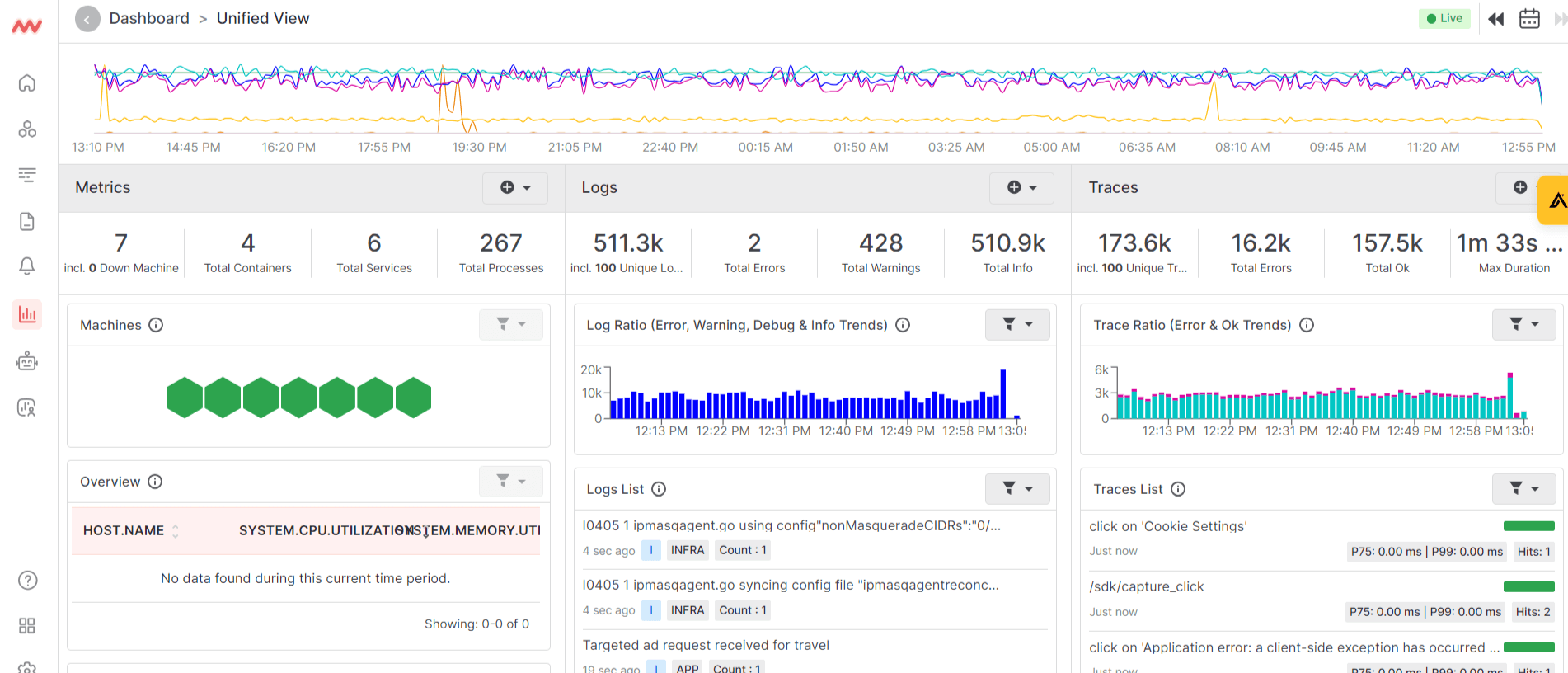IT downtime can be costly. And despite the best of our efforts, circumstances make it unavoidable. A minute of downtime can cost almost $1670 per minute or $100,000 per hour, and this will only increase if you are a large IT organization. It also translates into lost productivity, user frustration, and potential repercussions for the company.
While IT downtime can have a lasting impact, what makes a whole difference is how organizations react when they experience these unfavorable circumstances, particularly in terms of their Mean Time to Repair (MTTR).
MTTR allows organizations to track the average time it takes to resolve an incident. The lower this number, the more efficient your organization is at tackling such risks.
In this article, we will examine what MTTR is, why it is essential, and some ways to reduce MTTR within your organization.
What is MTTR?
By definition, MTTR is the average time it takes to identify, diagnose, and resolve an incident that disrupts normal system function.
It essentially measures the efficiency of your incident response process and is defined by four ‘R’:
- Report: Time taken to report a particular incident.
- Response: Time taken to respond to the incident.
- Resolution: Time taken to completely resolve the incident.
- Recovery: Time taken to recover from the incident.
Reducing the MTTR means you have implemented disaster management processes, allowing your customers and DevOps teams to get back to order faster in case of any incident.
How is MTTR calculated?
MTTR is a crucial metric for any incident management process. It is measured using a straightforward formula:
MTTR = Total Time to Resolve All Incidents / Number of Incidents
In this formula,
- Total Time to Resolve All Incidents: This represents the cumulative amount of time spent resolving all incidents within a specific timeframe (e.g., a week, month, or quarter).
- Number of Incidents: Refers to the total number of incidents encountered during the chosen timeframe.
By calculating MTTR, you gain valuable insight into the effectiveness of your existing incident response strategies. As per most industry analyses, the ideal MTTR for most industries should be less than 5 hours.
This is keeping all factors in mind, including the time it takes not just to resolve a particular incident but also to recover from it (which includes damages in terms of finances, lost business, customer ratings, or other indicators).
How to Reduce MTTR?
Now, let us focus on understanding how we can reduce MTTR for your incident management. Even if the resolution time is less than 5 hours, it can still significantly impact the business.
But fret not, for this section equips you with a battle plan—a comprehensive strategy designed to help you reduce MTTR and achieve lightning-fast incident resolution.
1. Set up an incident response plan
The first step to reducing MTTR is to start with a plan. Establish a clear policy to document the basics:
- Incident Classification and Escalation: Establish a transparent system for classifying incidents based on severity, allowing for swift prioritization and resource allocation.
- Communication Channels: Ensure seamless communication across all teams – from IT to DevOps – with designated communication channels and clear escalation protocols.
- Documentation & Knowledge Repository: Compile a comprehensive knowledge base of past incidents, resolutions, and troubleshooting procedures. This empowers your team to leverage past experiences and expedite future resolutions.
By meticulously crafting an incident response plan, you establish a unified command center and ensure a coordinated and rapid response to any disruption.
2. Define roles in your incident management command structure
Even if you have a well-planned incident management system, the key is defining the roles and responsibilities of each individual. This is crucial because when an incident is reported, the right teams need to be informed to take instant action.
So once you have a plan, do not forget to assign the following:
- Roles and Responsibilities: Define ownership. Every team member must understand their role and responsibilities during an incident, eliminating confusion and delays.
- Communication Channels: How should the incident be reported? Ensure seamless communication across all teams – from IT to DevOps – with designated communication channels and clear escalation protocols.
This will speed up operations once an incident is detected and ensure the right teams get the required information.
3. Detect, diagnose, and resolve incidents faster with AIOps
If you are still relying on the traditional methods, anomaly detection can often leave critical blind spots. To create a more proactive monitoring approach, AIOPs are crucial for your incident detection and tracking processes. Using the power of AI, you can improve your overall process, including:
- Proactively Detect Anomalies: AI algorithms can analyze vast amounts of data to identify subtle deviations from normal system behavior, enabling you to intercept potential incidents before they erupt into full-blown outages.
- Accelerate Root Cause Analysis: AIOps can sift through mountains of data, pinpointing the root cause of incidents with laser focus. This eliminates the time-consuming process of manual troubleshooting, allowing your team to focus on swift resolution.
- Predict and Prevent: Advanced AI can learn from past incidents and identify patterns that could lead to future disruptions. This proactive approach empowers you to prevent outages before they even occur.
By integrating AIOps into your MTTR reduction strategy, you gain an invaluable advantage: the power of artificial intelligence to analyze, identify, and predict, ensuring a faster and more effective response to any digital threat.
4. Proactively monitor
To measure efficiency, you need to have clear insights into your incitement management and response processes. This is why comprehensive infrastructure monitoring is crucial for reducing MTTR.
Infrastructure monitoring helps you get a clear picture of your entire IT landscape. It ensures that your systems are in perfect order and allows you to identify issues early on to resolve them quickly.
Establishing a culture of constant vigilance with proactive monitoring ensures early detection of issues, enabling faster intervention and a significant reduction in MTTR.
5. Set reliable alerting
But simply monitoring isn’t enough. You need intelligent alerting or the power of observability tools. Observability tools like Middleware help you configure alerts to trigger only when anomalies or deviations from normal behavior occur. This lets your team focus on critical issues and react swiftly to threats.
To set up a reliable alerting system, you need to:
- Set up a monitoring process where your entire infrastructure is constantly monitored
- Define the metrics for normal or ideal behavior. For example, if the ideal usage of your processor is below 50%, the system will consider this normal behavior. However, if it goes beyond 85%, you can set up the system to raise alerts. This will help you take proactive actions, such as reducing unwanted resources or tasks and minimizing usage to avoid any downtime or lag in the system.
- Configure alerts to trigger based on correlations between different data points. This helps identify the root cause of an incident faster, eliminating time spent chasing false positives.
- Implement a tiered alerting system that prioritizes critical issues demanding immediate attention, ensuring your team focuses on the most impactful problems first.
Establishing a robust alerting system that focuses on actionable insights and prioritization empowers your team to react swiftly and effectively to real threats, significantly reducing MTTR.
6. Automate repeated actions
Most IT and operations teams spend considerable time on mundane tasks, such as monitoring metrics or system activities. Automation is your secret weapon for liberating your team from these mundane activities.
This can also help to reduce MTTR using methods such as:
- Automated Incident Response Actions: Configure automated responses for repetitive tasks like system restarts or service escalations. This frees up your team to focus on complex problem-solving and expedite resolution times.
- Automated Reporting and Analysis: Automate reports and incident analysis generation, providing valuable insights into trends and recurring issues. This empowers proactive problem-solving and continuous improvement of your MTTR.
By strategically implementing automation, you streamline your incident response process, allowing your team to focus on high-value activities that truly improve MTTR.
7. Build a robust change management strategy
While often necessary, change can be a breeding ground for IT disruptions. This is where tight change management processes become your defensive wall:
- Impact assessments: Before implementing any change, conduct thorough impact assessments to identify potential risks and ensure minimal disruption. This proactive approach helps prevent disruptions before they even occur.
- Version control and rollback plans: Maintain meticulous version control and develop clear rollback plans. This allows for a swift recovery in case of unforeseen complications arising from a change.
- Communication is paramount: Ensure clear and comprehensive communication regarding upcoming changes to all stakeholders, minimizing confusion and potential disruptions. You can anticipate and address potential roadblocks before they impact system stability by keeping everyone informed.
By fortifying your change management processes, you proactively address potential roadblocks and minimize the likelihood of incidents, ultimately contributing to a lower MTTR.
Leveraging Middleware to reduce MTTR
Implementing these seven powerful MTTR reduction strategies can significantly improve your incident response efficiency, minimize downtime, and ensure a more resilient IT infrastructure.
However, the ultimate goal is not just a lower MTTR but the relentless pursuit of zero downtime – a goal well within your grasp with the right tools and strategies.

This is exactly where observability tools like Middleware, an end-to-end full-stack observability platform, become your secret weapon. The platform is designed to provide real-time monitoring and alerting capabilities alongside advanced analytics and reporting tools.
Thus, you get a unified view of metrics, logs, traces, and events, helping you accelerate troubleshooting and also leverage AIOps for better infrastructure and application performance.
Middleware ushers in a new era of proactive IT management with its advanced capabilities and features, such as:
- Performance benchmarking: Middleware allows you to establish performance baselines for your IT infrastructure. This enables you to identify areas for improvement and proactively optimize your systems to prevent future slowdowns or outages.
- Predictive analytics: The platform leverages historical data to predict potential bottlenecks and system vulnerabilities before they erupt into incidents. This allows you to address potential issues preemptively, preventing downtime altogether.
- Root cause analysis: Middleware goes beyond simply identifying the root cause of an incident. It analyzes trends and patterns across historical data, helping you identify systemic weaknesses and implement preventive measures to prevent similar incidents from recurring in the future.
- Data correlation: By linking metrics, logs, traces, and network data, you can easily move from correlation to causation. Middleware facilitates this correlation, enabling users to quickly investigate alerts without switching screens. This streamlined process is instrumental in minimizing MTTR.
Thus, by leveraging Middleware’s feature set and tailoring it to your specific needs, you can significantly enhance the effectiveness of each MTTR reduction strategy.
Conclusion
As we conclude this article, you have been equipped with all the necessary strategies to tackle incidents and reduce MTTR, outlining the strategies that can help you achieve this goal. By implementing these strategies and leveraging Middleware’s advanced features, you can achieve significant results:
- Reduced Downtime: Faster incident resolution translates to less downtime, minimizing user disruption and safeguarding business continuity.
- Improved Efficiency: Streamlined workflows and automated tasks free up your IT team to focus on high-value activities, maximizing their productivity.
- Proactive Prevention: AI-powered insights empower you to predict and prevent incidents before they occur, eliminating downtime altogether.
- Enhanced Collaboration: Unified communication and knowledge sharing across teams fosters a culture of collaboration, strengthening your overall IT resilience.
The journey towards zero downtime doesn’t end here. It’s a continuous pursuit of optimization and improvement. By embracing a proactive approach and leveraging the power of Middleware, you can transform your IT infrastructure from vulnerable to resilient, ensuring a foundation for success in today’s ever-demanding digital landscape.
Ready to achieve zero downtime and unlock the full potential of your IT infrastructure? Sign up today to learn more about Middleware Observability Solution for your business!



